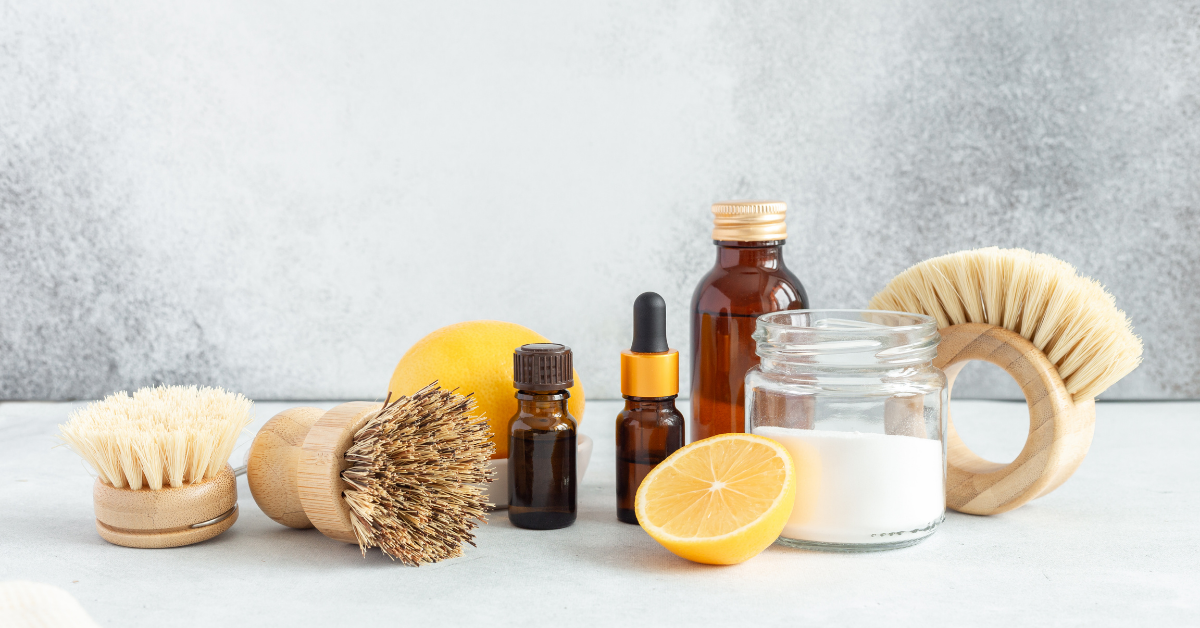
Do You Need to Worry About Formaldehyde in Your Home?

*Collaborative Post
Formaldehyde is a common chemical found in many household products. While it serves practical purposes, it can pose health risks. Understanding its sources and effects is crucial for a healthy home. So, do you need to worry about formaldehyde in your home?
What is Formaldehyde?
Formaldehyde is a colorless, strong-smelling gas widely used in various manufacturing processes. It’s a naturally occurring compound but can pose health risks when used in high concentrations. This chemical is known for its preservative and antibacterial properties, which make it valuable in different industries.
Why It’s Used in Household Products
Formaldehyde is used in household products for several reasons. Its preservative qualities help extend the shelf life of many items and prevent mold and bacterial growth.
In adhesives, it’s essential for creating strong bonds in pressed wood products, ensuring durability and stability. Its antibacterial properties are also utilized in cleaning agents, making them more effective in sanitizing surfaces.
Common Sources in Homes
Formaldehyde can be found in numerous household items due to its versatile applications. Here’s a closer look:
- Furniture: Pressed wood products like particleboard, plywood, and medium-density fiberboard (MDF) are commonly used in furniture. These materials are bonded using formaldehyde-based resins, making the furniture sturdy and affordable. Bed frames, in particular, often contain these materials, which can release formaldehyde over time.
- Building Materials: Insulation materials, paints, and varnishes often contain formaldehyde. This chemical helps improve the adhesion and durability of these products, making them long-lasting and resistant to environmental factors. Formaldehyde also acts as a binding agent in insulation, ensuring the material stays intact and performs effectively.
- Household Products: Many everyday items, such as cleaning agents, air fresheners, and some textiles, contain formaldehyde. Its presence enhances cleaning products’ ability to kill germs and bacteria. In textiles, formaldehyde is used to prevent wrinkles and maintain fabric quality.
Chemical Composition and Properties
Formaldehyde’s chemical formula is CH2O. It’s a simple aldehyde consisting of a carbon atom double-bonded to an oxygen atom with two hydrogen atoms attached.
This simplicity makes it highly reactive, allowing it to form bonds quickly with other compounds. This reactivity is why formaldehyde is so effective in various applications, from adhesives to preservatives.
Health Risks Associated with Formaldehyde
Formaldehyde exposure poses significant health risks, from immediate symptoms to long-term effects. Knowing these risks is essential for maintaining a safe and healthy home environment.
Immediate Symptoms
Short-term exposure to formaldehyde can cause immediate symptoms. These effects include irritation of the eyes, throat, and nose.
Some people may also experience coughing, wheezing, or skin irritation. These symptoms can be particularly noticeable in areas with poor ventilation or high levels of formaldehyde, such as rooms with new furniture made from pressed wood products.
Long-term Effects
Long-term exposure to formaldehyde, even at lower levels, can lead to more severe health problems. One of the most concerning is its classification as a carcinogen, meaning it can increase the risk of cancer.
Prolonged exposure has been linked to nasopharyngeal cancer and leukemia. Additionally, chronic exposure can exacerbate respiratory conditions such as asthma, leading to persistent coughing, wheezing, and difficulty breathing.
At-Risk Groups
Here are the groups who are more susceptible to the effects of formaldehyde:
- Children: Young children are particularly vulnerable. Their developing bodies are more sensitive to toxic substances and often spend more time indoors, increasing their exposure. This is especially concerning when they sleep on beds made with formaldehyde-containing materials, which can release the gas over time.
- Elderly: Seniors may have weakened immune systems and pre-existing health conditions that make them more susceptible to the harmful effects of formaldehyde. Respiratory issues are more common in this age group, and exposure can exacerbate these conditions.
- Individuals with Pre-existing Conditions: People with asthma, allergies, or other respiratory issues are at greater risk. Formaldehyde can trigger or worsen symptoms, leading to increased discomfort and health complications.
Studies and Statistics on Formaldehyde
Recent research on formaldehyde exposure underscores its potential health risks and prevalence in our homes. Here’s a summary of the latest findings and data.
Recent Studies
The Occupational Safety and Health Administration and the Environmental Protection Agency have extensively studied formaldehyde. According to OSHA, formaldehyde is classified as a human carcinogen, with studies showing a clear link between exposure and nasopharyngeal cancer. The EPA has also highlighted formaldehyde’s role in causing respiratory problems and its potential to exacerbate conditions like asthma.
One notable study by the National Institute for Occupational Safety and Health (NIOSH) found that long-term exposure to formaldehyde can significantly increase the risk of certain types of cancer, including myeloid leukemia. These findings are crucial for understanding the broader implications of formaldehyde exposure.
Relevant Statistics
Statistics from various studies provide a clearer picture of formaldehyde levels in typical homes and their associated health risks. WHO reports that formaldehyde levels in indoor air are usually higher than in outdoor air, often from 0.02 to 0.04 parts per million (ppm) in homes without specific sources of formaldehyde. However, in homes with significant sources, such as new furniture or renovations, levels can exceed 0.1 ppm.
A study published in the Journal of Environmental Health Perspectives found that kids exposed to higher levels of formaldehyde at home are more likely to develop respiratory symptoms and conditions like asthma.
How to Detect Formaldehyde in Your Home
Here’s a comprehensive guide on identifying formaldehyde levels in your household.
Detection Methods
There are two primary methods of testing for formaldehyde: professional testing services and DIY test kits. Each method has advantages, depending on your needs and budget.
Professional Testing Services
Professional testing services provide the most accurate and detailed measurements of formaldehyde levels in your home. These services typically involve certified professionals who use advanced equipment to detect even the slightest formaldehyde concentrations.
DIY Test Kits
For a more affordable and convenient option, DIY test kits are available. These kits allow homeowners to test for formaldehyde themselves. While not as precise as professional services, they indicate formaldehyde levels in your home. Here’s how to use a DIY test kit:
- Purchase a Reliable Kit: Choose a kit from a reputable manufacturer. Look for reviews and certifications to ensure accuracy.
- Prepare the Test Area: Select the area you want to test, ideally where you suspect higher formaldehyde levels, like rooms with new furniture or recent renovations.
- Follow the Instructions: Each kit comes with specific instructions. Generally, you’ll need to place the testing device in the selected area for a designated period, usually 24-48 hours.
- Send the Device for Analysis: After the exposure period, seal the device as instructed and send it to the designated laboratory for analysis.
- Await Results: The lab will analyze the sample and send you a report detailing the formaldehyde levels in your home.
- Interpret Results: Low levels (below 0.02ppm) are generally safe, moderate levels (0.02 to 0.1ppm) indicate the presence of formaldehyde, and high levels (above 0.1ppm) are potentially harmful.
Reducing Formaldehyde Levels in Your Home
Here are some practical strategies for reducing formaldehyde exposure.
Mitigation Strategies
Lowering formaldehyde levels can be achieved through several effective methods. These strategies focus on improving air quality and choosing safer products.
- Improving Ventilation is one of the simplest and most effective ways to reduce formaldehyde levels. Ensuring that your home is well-ventilated helps disperse formaldehyde and other indoor pollutants.
- Using modern air purifiers with activated carbon filters is effective at lowering formaldehyde levels. They are built to absorb VOCs from the air. Look for an effective model such as the PuroAir HEPA 14 Air Purifier which is capable of cleaning large rooms (up to 1,115 square feet) in just over an hour.
- Choosing Low-Formaldehyde or Formaldehyde-Free Products can significantly reduce exposure. When shopping for furniture, building materials, or household items, consider looking for certifications such as GREENGUARD Gold. Select paints, adhesives, and finishes labeled as low-VOC (volatile organic compounds), which emit fewer harmful chemicals.
- Regular Cleaning and Maintenance can also help decrease formaldehyde levels. Dust and dirt can accumulate and release formaldehyde, so keeping your home clean is essential.
- Choosing Amish Furniture Factory’s Amish bedroom furniture, especially their Amish beds, will significantly reduce the risk of being exposed to formaldehyde while sleeping. Amish’s craftsmanship ensures that every piece of furniture they make is free from harmful formaldehyde emissions.
Making Your Home Safe from Formaldehyde
Reducing formaldehyde exposure in your home is essential for ensuring a healthy living environment. You can significantly lower formaldehyde levels by improving ventilation, using air purifiers, choosing low-formaldehyde products, and maintaining regular cleaning.
Investing in quality furniture like Amish bedroom furniture, particularly Amish beds, is another effective way to minimize exposure. Thanks to their use of solid wood and traditional craftsmanship, they are free from harmful emissions.
*This is a collaborative post. For further information please refer to my disclosure page.




